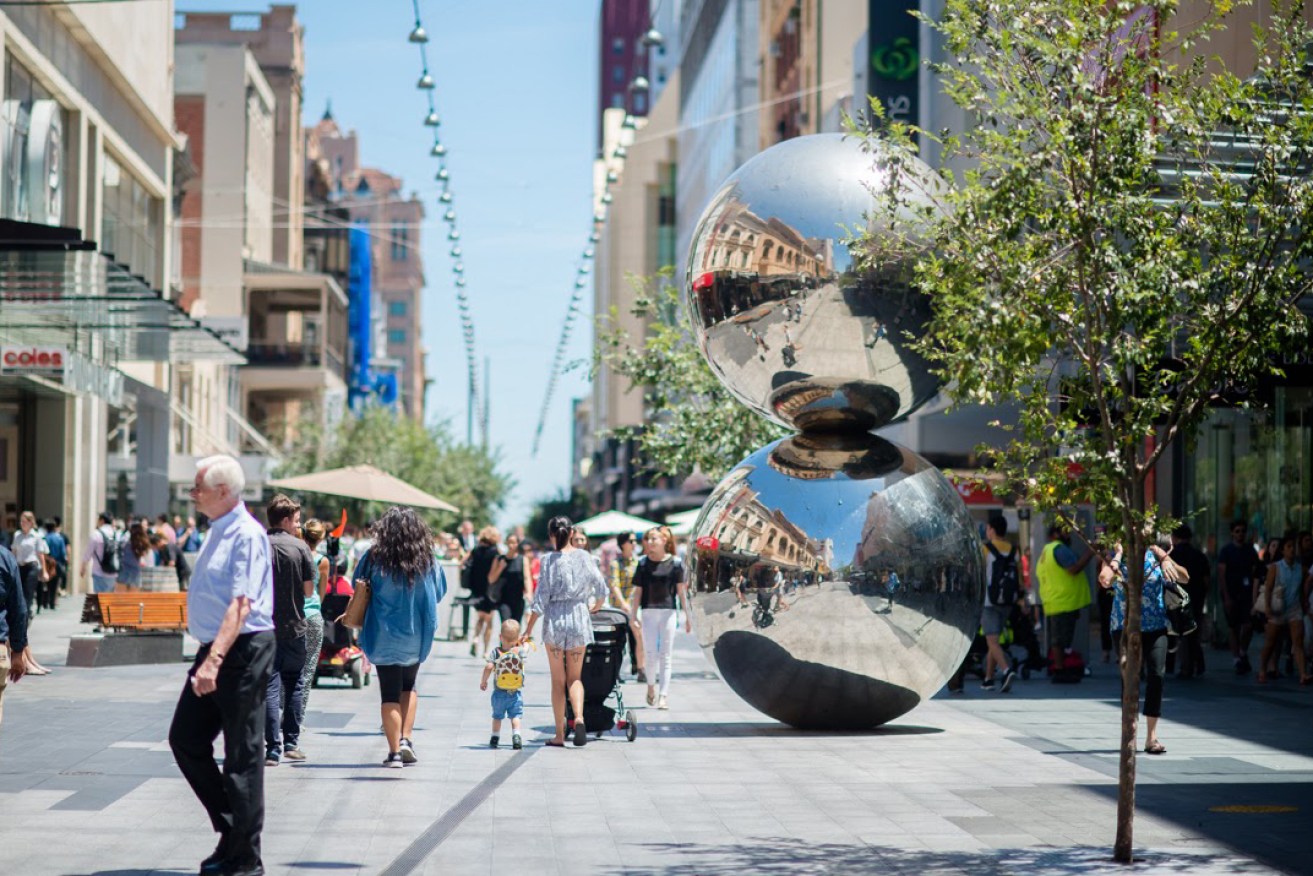Retail spending hits record high in March
Retail spending in Australia reached a record turnover in March against the backdrop of rising prices and eased COVID-19 restrictions, with South Australia the only state to record a fall.

Rundle Mall. Photo: Tony Lewis/InDaily
The Australian Bureau of Statistics said retail trade rose 1.6 per cent in March to $33.6 billion, 0.8 per cent higher than the previous record set in November 2021.
“Rising prices, combined with the continued easing of restrictions across the country has led to rises in turnover in all three months of the March quarter,” ABS director of quarterly economy-wide statistics Ben Hames said.
The ABS reported housing lending also rose 1.6 per cent in March
Owner-occupier lending rose 0.9 per cent, partially recovering from the 4.7 per cent drop in February.
Loans to housing investors also rose 2.9 per cent to a record high $11.7 billion.
The results for spending and lending were stronger than had been predicted by economists and come ahead of the impact from rising interest rates in the months ahead.
However, South Australia was the outlier – with spending dropping by 0.7 per cent.

Source: ABS
Nationally, housing prices in particular are expected to come under pressure after the Reserve Bank of Australia started the ball rolling on Tuesday with the first with the first interest rate in over a decade.
The RBA lifted the cash rate to 0.35 per cent from a record low 0.1 per cent following its monthly board meeting, and coming after last week’s spike in inflation to its highest level in over 20 years.
RBA governor Philip Lowe warned further interest rate rises should be expected in coming months, because without them inflation would grow substantially.
Commonwealth Bank of Australia was the first of the big four banks to hike its standard variable home loan rates on Tuesday, passing on the full 0.25 percentage point increase.
ANZ and Westpac quickly followed suit, while National Australia Bank caught up with its competitors on Wednesday morning.
Prime Minister Scott Morrison urged all banks to pass on the higher interest rates to the depositors as well.
Only Westpac and NAB have announced saving rate increases so far among the big four banks.
– with AAP
Rising interest rates are expected to curb demand in Australia’s construction industry, particularly in the residential sector, Ai Group says.
The Australian Industry Group/Housing Industry Association performance of construction index eased 0.6 points to 55.9 in April, but held above the crucial 50-point market that separates expansion from contraction.
Ai Group chief policy advisor Peter Burn said while new orders are growing at a faster rate than in March, the industry is finding difficulty sourcing materials and labour, as well as facing continuing prices pressures.
“The rise in interest rates announced yesterday by the Reserve Bank and the further rises foreshadowed can be expected to ease demand growth somewhat, particularly in the residential sectors,” Burn said.
He said while both the federal and state governments are adding to their infrastructure pipelines, the ability of the industry to meet still higher levels of activity will depend on the supply of skilled labour, including from abroad, and on the success of efforts to repair disrupted supply chains.




